There are many different kinds of coffee brewing machines, and each one will produce a unique drink. If you’re planning on purchasing any kind of coffee maker for home, then caffeine is probably your everyday routine. It’s important to select the right coffee machine if you’re going to be using it often. We have carefully researched the differences between the traditional coffee maker, an espresso maker, and a French press.
A coffee maker, espresso maker, and french press vary most by their brewing method and the resulting flavors. A coffee maker is commonly known for producing “drip coffee.” This is made by pouring hot water through ground coffee and a filter. An espresso maker forces hot water through finer coffee grinds with high pressure and speed. A French press lets the coffee grounds sit in boiling water before you push the grounds to the bottom of the machine.
There are a variety of coffee machines, and people can take their caffeine pretty seriously. So it’s important to distinguish one machine from another. Keep reading to learn which one is right for your home, based on the advantages and disadvantages of each coffee maker.
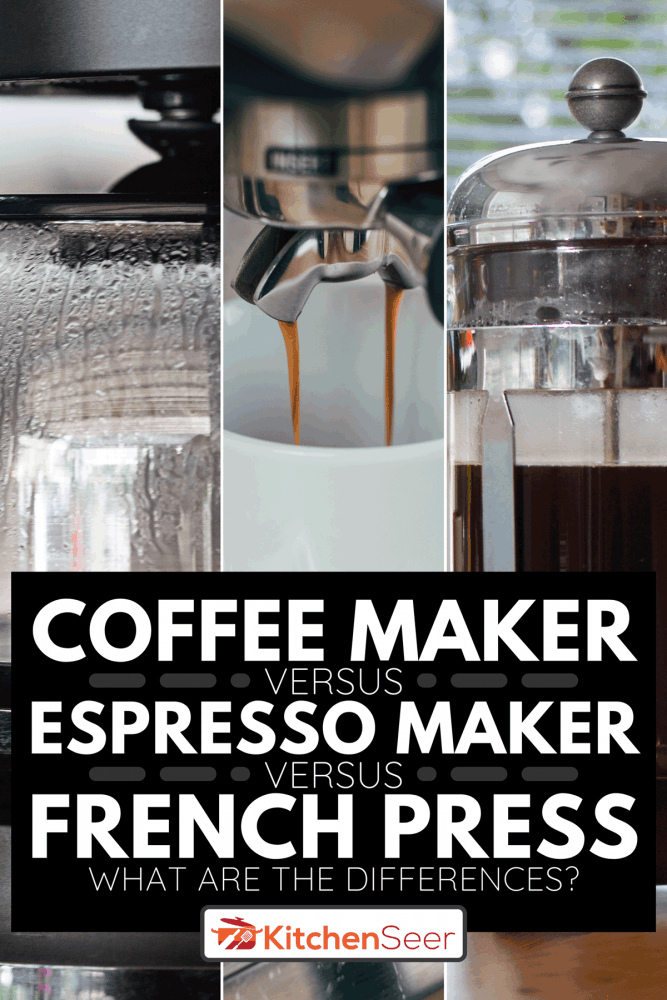
What is the best coffee maker for home use?
There are a few things you should take into consideration before buying a new coffee maker.
With so many options, the first thing you need to decide on is what kind of coffee flavor, texture, and richness that you want. There is a large difference between traditional coffee and espresso coffee. A conventional coffee maker and a French press cannot make espresso coffee.
You should also consider the difference between each machine’s brew duration, price, and health benefits.
Should I use a drip coffee maker?
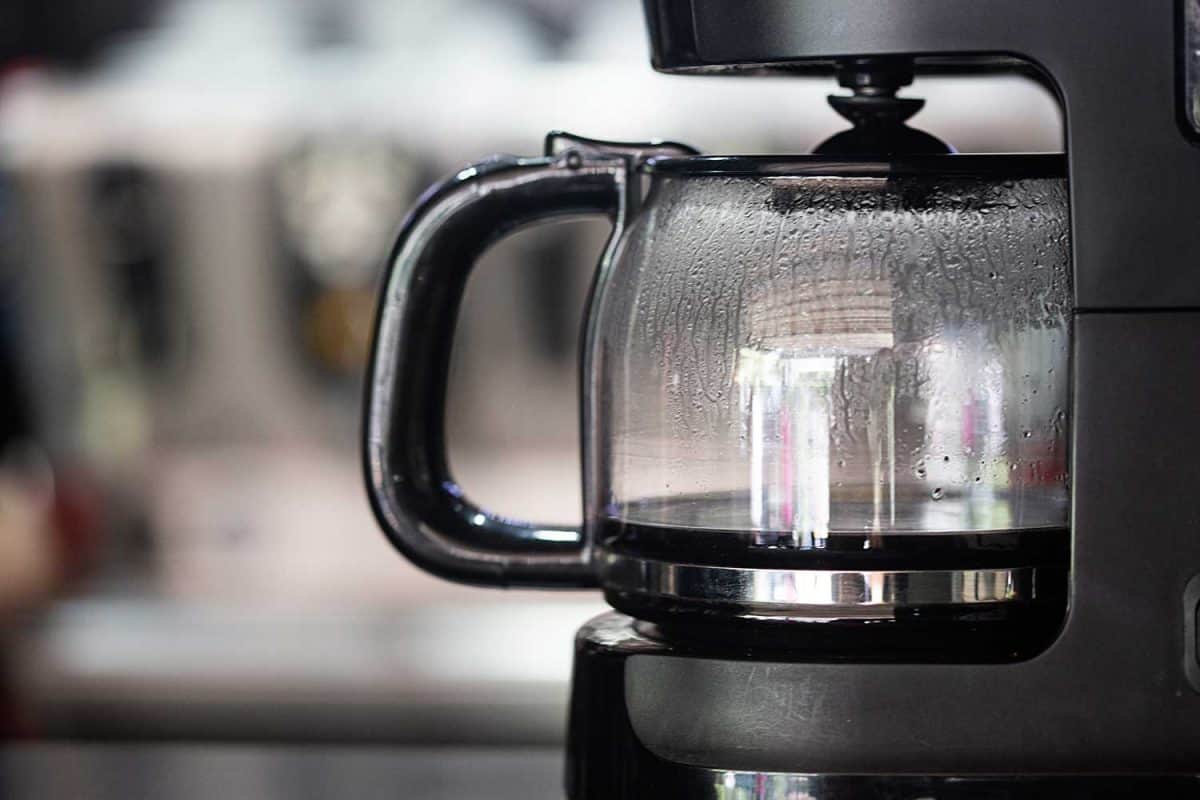
Making drip coffee is the most common and popular option for home use. This is because drip coffee makers are generally inexpensive, and they are known for being easy to use. Also, it shouldn’t take more than a few minutes to brew your cup of coffee.
Click here to find this drip coffee maker on Amazon.
Just bear in mind that while the coffee maker itself isn’t too much of an investment, you will also need to purchase a coffee grinder and filters. Paper filters can slowly add up if you’re having one or more cups of coffee every day.
Some coffee makers keep multiple cups of coffee warm for a while. This way, you don’t have to make another brew. But not all systems have this feature built-in, and the heat usually doesn’t last for an entire workday.
True, you can purchase permanent coffee filters. These special filters are traditionally made of metal. They are sometimes sold as GoldTone filters, named for the gold plating on the metal.
Click here to find this permanent filter on Amazon.
Permanent filters are certainly reusable, which is highly efficient. Just keep in mind that you will have to wash permanent filters out every time you use them. Otherwise, you could find a lot of unwanted buildup in your next cup of coffee. All of the cleaning necessities will cost you in the long run. Drip coffee makers require filters because there is no pressure. You can read this post to learn if you have to put a filter in a coffee maker.
What is the healthiest coffee maker?
Regarding health, Harvard Health Publishing agrees with studies that suggest filtered coffee is more healthy than unfiltered coffee. This is because unfiltered coffee deliberately allows dangerous oils from the coffee grounds to remain in the drink. Of course, these oils known as diterpenes are also known for adding more flavor.
However, if you want to be more cautious and you drink coffee every day, then a drip coffee maker is the healthiest option. Espresso machines and French press machines do not use filters during the brewing process. If you're also curious about Keurig coffee, you can read this post to learn if Keurig coffee is weaker than drip coffee.
Should I use an espresso machine?
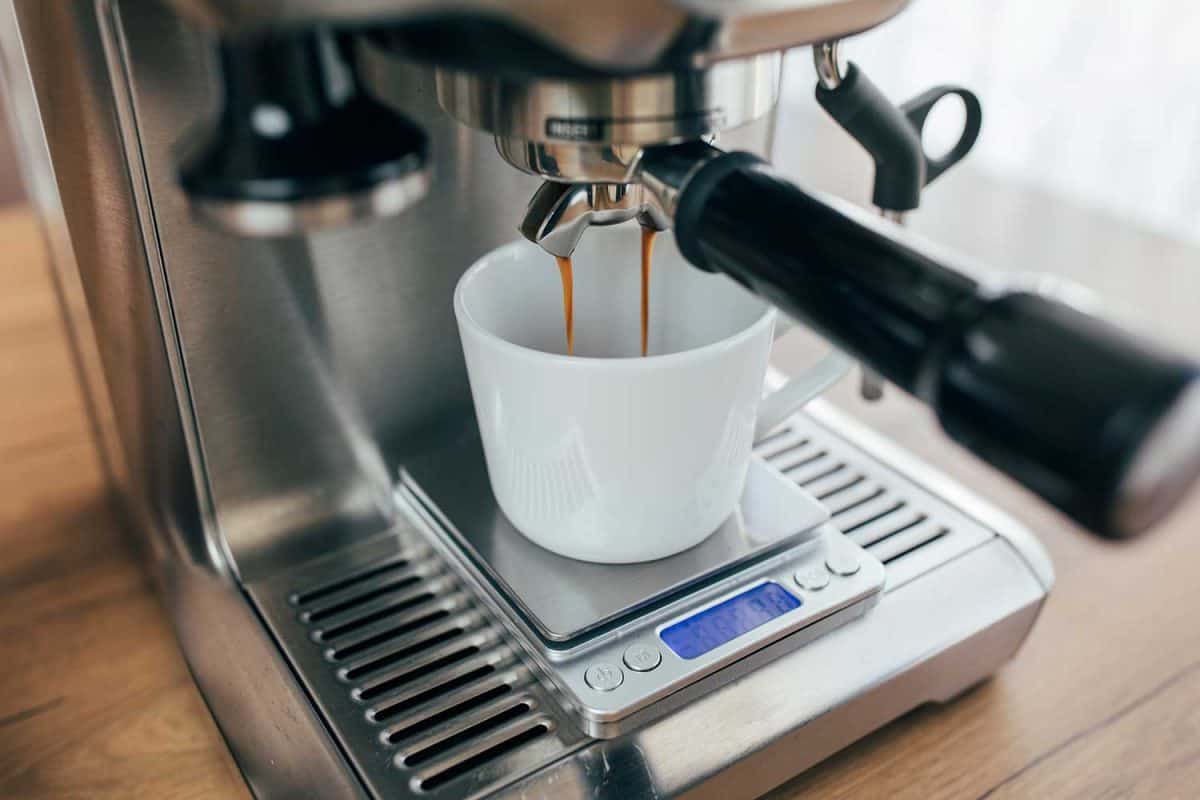
An espresso machine is a powerful coffee maker for specialty drinks. Because of the unusual pressure and speed of the hot water, a filter is unnecessary. It also means that your brewing time is going to be surprisingly short. Brewing an espresso can take as little time as half a minute, or even just twenty seconds. This can be handy for busy mornings.
The results will be a very rich, thick, and creamy espresso drink that is usually called a “shot.” If you want flavor, then an espresso machine is going to taste extremely potent. Espresso is the primary ingredient for most mixed coffee drinks, such as lattes and cappuccinos. This makes an espresso machine the most versatile coffee maker on the market. It can suit any occasion or mood.
However, espresso machines only serve in small quantities. And one of the biggest drawbacks of an espresso machine is the price tag. Espresso coffee makers are just notoriously expensive. This is because the value of espresso coffee is a rich, high-quality experience.
Also, it can be tough to make the right taste yourself. You’ll probably have to invest in an automatic model. Further, some espresso machines come with other costly features, such as a steamer for heating milk.
Lastly, consider that espresso machines will not use a filter. As mentioned above, unfiltered coffee intentionally sacrifices health for flavor. It’s best to consider your own personal health conditions and requirements before indulging in tasty oils.
What is the best coffee and espresso maker?
It’s hard to find the right coffee maker when every brand has to claim they’re the best. This means you will have to use your own judgment. You should find an espresso machine that includes all of the features you personally want. It should also fit your budget.
More specifically, you can usually trust actual customer reviews and satisfaction.
In that case, the winner would be the Nespresso Vertuo Coffee and Espresso Machine Bundle. It’s a hefty investment, so make sure you really want the extra features. If you don’t need all those fancy add-ons, then a simpler espresso machine will do.
Click here to find this espresso machine bundle on Amazon.
Can you use French press coffee in an espresso maker?
A French press uses coarsely ground coffee. French press grounds are also larger, so they will settle at the base of the machine. Unfortunately, these rougher and larger kinds of coffee grounds will not be suitable for an espresso maker. The only way to achieve a proper espresso taste is to use finely ground coffee.
Usually, it is common practice to try making an espresso shot inside a French press. This is because espresso coffee is so finely ground. Sometimes, it’s possible to imitate an espresso taste with a French press. But it will never have that authentic, signature Italian flavor.
Should I use a French press?
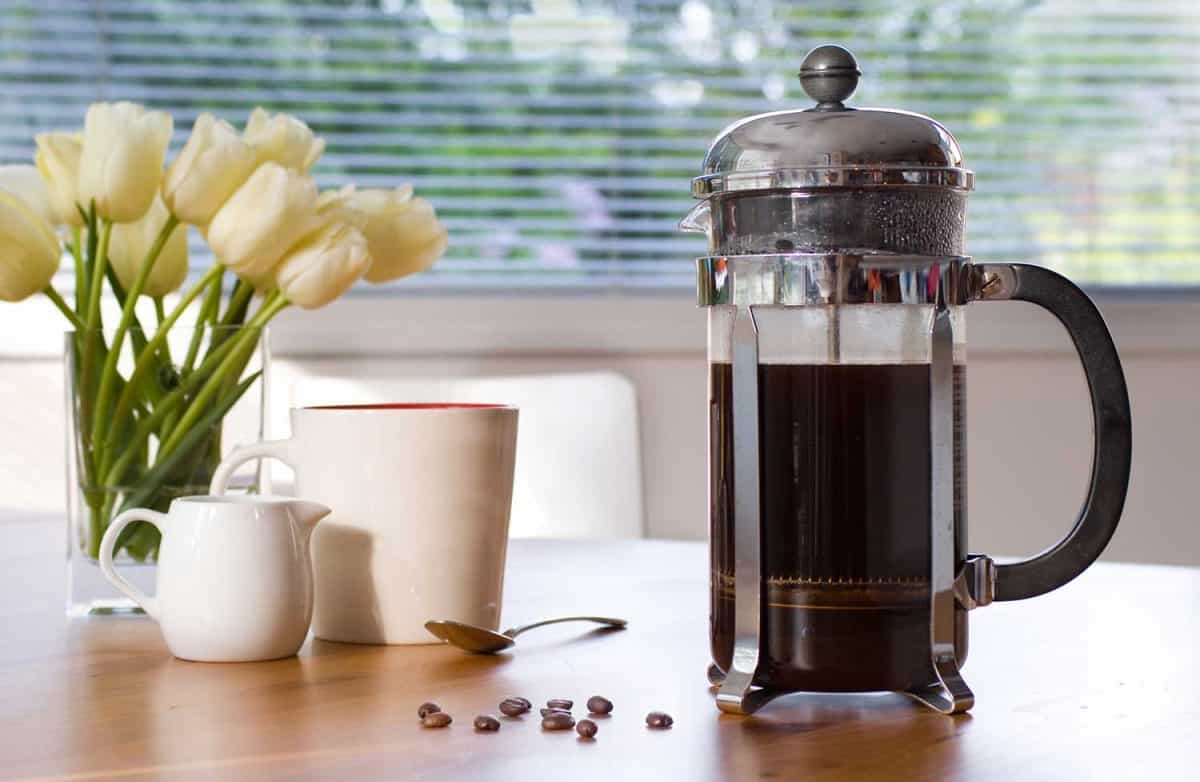
A French press is also known as a plunger, because of its brewing method. You literally press a plunger down into the boiled coffee grounds in order to separate them when the drink is ready to serve. Some of the greatest benefits of a French press are its rich results, low price, and portable design.
Click here to find this French press on Amazon.
With a French press, the brewing time is usually about half as long as a drip coffee maker. This means you’ll typically have to wait around two or four minutes. This makes a French press a great alternative to instant coffee. You can quickly make a richer drink without the overwhelming power of an espresso shot.
Why Is French press coffee bad for you?
A French press is something like the middle ground between a drip coffee maker and an espresso machine.
A French press and a drip coffee maker don’t use highly pressurized hot water, so the brewing is going to take a little longer. But a French press and an espresso machine both avoid using filters, which means you’re going to have a richer drink than usual.
Unfortunately, unfiltered coffee is still a bad idea for extensive drinking. Like an espresso machine, a French press will allow all of the dangerous coffee oils that can raise your cholesterol.
Does drip or French press have more caffeine?
To begin with, espresso machines produce the least amount of caffeine. This is because the coffee grounds are in contact with hot water, and for a short amount of time. But the true key is that espresso machines also use finely ground coffee.
The National Coffee Association agrees that the contact time with a French press should be shorter than a drip coffee maker. Also, a French press uses coarse coffee grounds while a drip coffee maker uses medium grounds. Altogether, this means that a French press should extract less caffeine than a lengthy drip coffee maker.
Summary
Finding the right coffee experience is important for your wallet, your health, and your taste buds. So even though it can be difficult to research and invest in the right coffee maker, the results will be worthwhile. Although there are many options, you can now tell the difference between the three most popular coffee makers. There’s a lot to consider, but at least your next cup of coffee can be perfect!






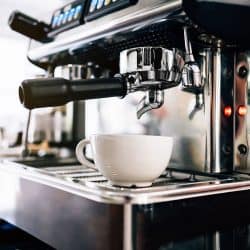
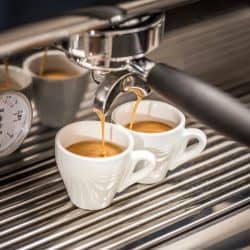
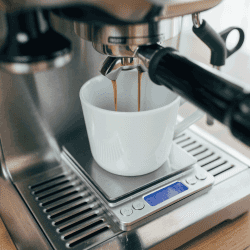
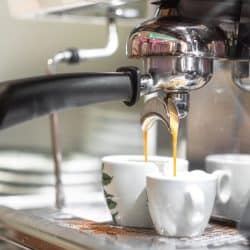
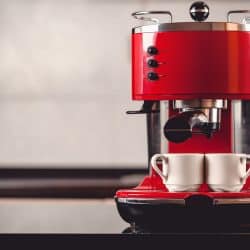
I am surprised you did not include a percolator in your comparison. Some common issues I find with mine is that even with a very low flame once reaching the boiling point, the water percolates over the grounds faster than it can pass through them, so while most of the grounds stay inside the metal filter, water that flows over the edges of it may bring some grounds and oils into your coffee. I usually have one or two cups out of the pot before pouring the rest through a metal strainer with a drip pot filter into another metal container (the type restaurants steam milk in). What I don’t consume in four hours gets chilled sitting on a cloth in the refrigerator to protect the glass from hot/cold contact. Then I pour it into a plastic sealable container for use as a cold coffee over the next 3 to 5 days. Percolator pots can easily spill over if you allow it to percolate quickly at high heat for more than a couple seconds so it takes a lot of care to monitor closely. My last pot I kept the coffee and filter out until I saw water hitting the window at the top, then turned the heat down to minimum and placed the coffee and filter (metal, not paper) onto the metal tube water percolates up through. At this very low heat setting, I ended up letting it percolate for 20 minutes until I could smell it from the living room.